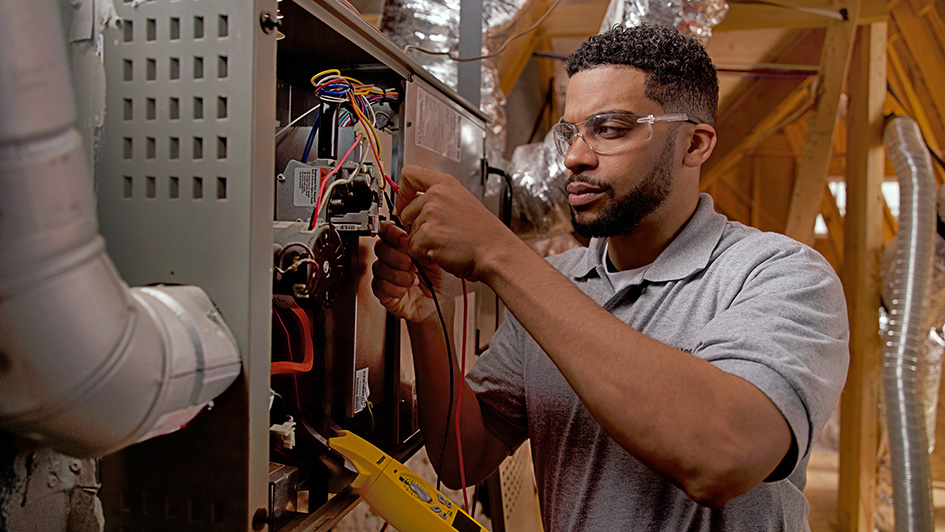
A furnace is usually a background player at home, ensuring you're warm in the cold winter months. It frequently isn't noticed until something breaks down.
One cause may be that your furnace has a cracked heat exchanger. It can be a safety risk, so it’s critical to know the symptoms of a cracked heat exchanger and what you can do if you are worried that might be the problem.
What Is a Heat Exchanger in a Furnace?
A heat exchanger transfers heat from the combustion chamber inside your furnace to the air that circulates inside the air ducts. It generally accomplishes this via coils or tubes that heat the air while serving as a barrier to keep the gasses produced in the combustion chamber, called flue gasses, from leaking out into your home.
Is a Cracked Heat Exchanger Dangerous?
Thanks to its important role, it isn't surprising that a cracked heat exchanger can be very dangerous. A crack in the heat exchanger can permit dangerous gasses – like carbon monoxide, which can be lethal – to flow across your home.
For this reason, never turn on your heating if you believe you're dealing with a cracked heat exchanger, as doing so could make the entire household ill. Call an HVAC professional as soon as possible if you are worried your heater has a cracked heat exchanger that should be repaired.
Four Signs of a Cracked Heat Exchanger:
- Furnace switches off: A cracked heat exchanger can cause your furnace to switch off.
- Odd Smells: If the air leaving your furnace has an intense chemical smell, it may be a sign gas is slipping through cracks in your heat exchanger. These gasses, which will often smell like formaldehyde, are a common warning sign.
- Carbon monoxide alarm initiates or you notice poisoning symptoms: If a cracked heat exchanger is relieving carbon monoxide in your home, your carbon monoxide alarm should go off or household members may start experiencing signs of carbon monoxide poisoning. Complications include headaches, dizziness, weakness, nausea, vomiting or feeling tired. If an alarm goes off or you feel sick, get out of the home immediately and then call for help.
- Soot: If you spot black sooty collecting near the exterior of your furnace, it’s another sign something may be seriously wrong.
What to Do if Your Furnace Heat Exchanger is Cracked
If you worry your furnace has a cracked heat exchanger, call a pro experienced in furnace installation Cache Valley right away so they can examine your system and, if necessary, perform a furnace heat exchanger replacement. Costs will vary depending on the situation, but estimates often hover around $1,000 to $3,000.
However, the good news is that heat exchangers are often protected by the warranty. You’ll want to confirm the warranty paperwork on your furnace, since while the warranty might not cover the entire cost of repairs, it still may significantly reduce your bill.
How to Prevent a Cracked Heat Exchanger in Your Home
One of the easiest ways to avoid problems in your furnace overall is with regular furnace maintenance. Furnaces offer the most benefits when they run efficiently. Calling a trained professional to examine your furnace for broken-down parts, clogged filters and other likely problems can help you avoid getting a big bill later on.
It’s also helpful to review your furnace filters every few months – it’s encouraged some filters be changed every 90 days or sooner if they are dirty or grimy. While the filters aren't a part of the heat exchanger itself, the strain of drawing air through a clogged filter makes your entire furnace work more vigorously to accomplish its job. And the harder your furnace needs to run, the more wear and tear pieces like the heat exchanger will sustain.
